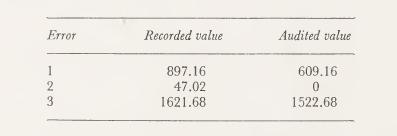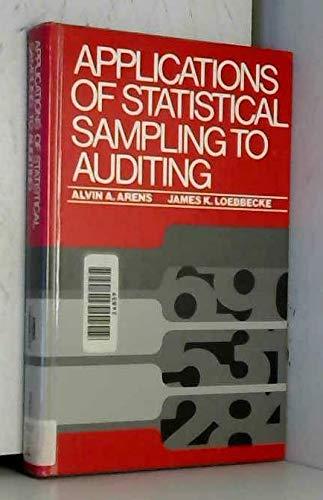Assume that in question 9-12, the population item that included error 1 was included in the sample
Question:
Assume that in question 9-12, the population item that included error 1 was included in the sample twice as two separate dollar units. How should the auditor treat this item?
Question 9-12:
Instead of no errors in question 9-9, assume that the following three errors were found:

Calculate error bounds for the population, using both the attributes tables and the shortcut method. Draw audit conclusions based on the results.
Question 9-9:
No errors were uncovered in the sample of 100 items for question 9-6. Calculate the error bounds and draw audit conclusions based upon the results. How would the error bounds be affected if you used a 50% error assumption?
Question 9-6:
An auditor is determining the appropriate sample size for testing inventory valuation using dollar unit sampling. The population has 2,620 inventory items valued at \($12,625,000.\) The allowable understatement or overstatement is \($500,000\) at a 90% confidence level. No errors are expected in the population. Calculate the preliminary sample size u§ing a 100% average error assumption.
Step by Step Answer:

Applications Of Statistical Sampling To Auditing
ISBN: 9780130391568
1st Edition
Authors: Alvin A. Arens, James K. Loebbecke




